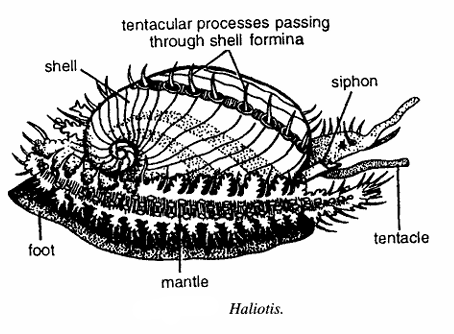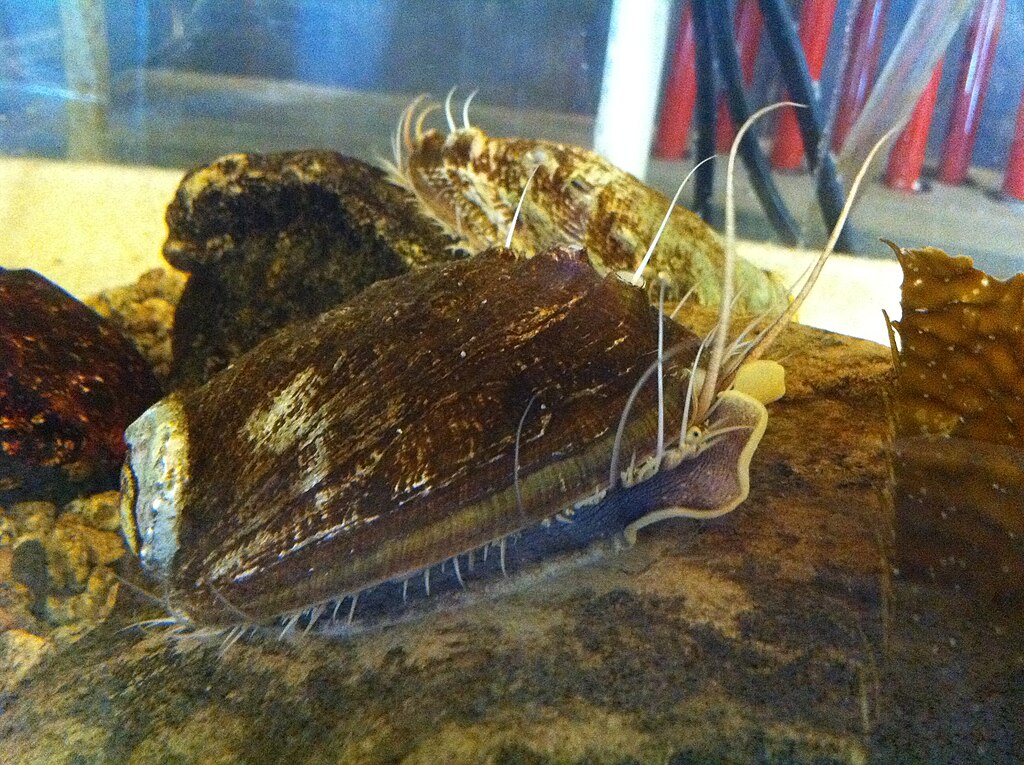Haliotis: Morphology, Classification, Habitat, and Ecological Importance of Abalone
Haliotis, commonly known as abalone, is a genus of marine gastropod mollusks in the family Haliotidae. These animals are renowned for their distinct, ear-shaped shells featuring a row of respiratory pores running along the shell margin. The genus is culturally and economically significant worldwide due to the prized mother-of-pearl inside the shell and their edible meat. Abalones inhabit rocky coastal environments globally and are vital herbivores within marine ecosystems. Their unique shell structure, anatomy, and reproductive strategies have been studied extensively in marine biology.
Classification of Haliotis
| Taxonomic Rank | Name | Characteristics |
|---|---|---|
| Kingdom | Animalia | Multicellular eukaryotic organisms |
| Phylum | Mollusca | Soft-bodied animals with a mantle and muscular foot |
| Class | Gastropoda | Snails and slugs with coiled or uncoiled shells |
| Subclass | Vetigastropoda | Primitive marine gastropods with nacreous shells |
| Order | Lepetellida | Patellogastropods and related limpets |
| Family | Haliotidae | Marine gastropods with ear-shaped shells and respiratory holes |
| Genus | Haliotis | Abalones with perforated shells and nacreous interiors |

Habit and Habitat
Haliotis species inhabit rocky marine shores, from intertidal zones to depths over 50 meters. They are securely attached to rocks using their muscular foot to resist wave action. Abalones preferably occupy clear, nutrient-rich waters with ample algal growth.
Their grazing activity focuses mainly on macroalgae such as kelp and coralline algae, functioning as primary consumers in coastal ecosystems. Abalones exhibit behaviors like homing, returning to specific rocky crevices after foraging. Many species have seasonal reproductive cycles aligned with water temperature and photoperiod.
Geographical Distribution
Abalones have a nearly global distribution in temperate and tropical marine waters. Species such as Haliotis iris (blackfoot pāua) are endemic to New Zealand, while others like Haliotis rufescens (red abalone) are native to the Pacific coast of North America. The genus also includes species distributed around Australia, South Africa, Japan, and the Mediterranean.
General Characteristics
- Commonly called as abalone.
- Shell is flattened ear-shaped and perforated with a series of holes tentacular processes emerge.
- Shell also contains several foramina through which respiratory water current passes.
- Large foot is provided with epipodia containing numerous sensory tentacles.
- Operculum is absent. Eyes are stalked. Spacious mantle contains a pair of gills.
- Anteriorly siphon contains a pair of tentacles on each side.
- Shell: Ear-shaped, flattened with a series of respiratory holes, outer surface roughened, interior nacreous and iridescent.
- Size: Varies from small (few centimeters) to large (shell lengths up to 30 cm).
- Foot: Large, muscular, used for adherence and locomotion.
- Radula: Specialized file-like organ with rows of teeth used to graze algae.
- Respiration: Water flows through respiratory pores, facilitating gas exchange.
- Coloration: Shell exterior varies from olive-green, brown, to red; interior displays pearly iridescence.
- Sensory Organs: Tentacles and eye spots located near the head.
- Growth Rings: Shell increments used to estimate age and growth rates.

Special Features
- Respiratory Pores: Series of perforations along shell edge allow water flow and waste removal.
- Nacreous Layer: Thick, iridescent mother-of-pearl layer used in jewelry and decorative arts.
- Strong Foot: Enables abalones to resist strong hydraulic forces and secure to substrates.
- Reproductive Strategy: Broadcast spawning with planktonic larvae enhancing dispersal.
- Growth Variability: Influenced by environmental factors such as water temperature and food availability.
- Cultural Importance: Featured in indigenous traditions and aquaculture industries worldwide.
Identification
Species are identified by:
- Shell shape, size, and number of respiratory holes.
- Outer shell coloration and texture.
- Radula morphology and tooth arrangement.
- Genetic markers increasingly support taxonomy.
- Geographic distribution and habitat preference.
Life Cycle and Reproduction
Abalones reproduce sexually with separate sexes. Spawning is usually seasonal, involving release of eggs and sperm into the open water. Fertilization leads to planktonic trochophore larvae, followed by veliger stages before settling as juveniles attaching to substrate.
Larval survival and dispersal are dependent upon oceanographic conditions, influencing population connectivity globally. Juveniles grow slowly, developing their characteristic shells and respiratory pores over months to years.

Ecological Role and Importance
- Algal Grazing: Control seaweed growth, preventing overgrowth and allowing colonization by other marine organisms.
- Food Web: Serve as prey for sea otters, lobsters, fish, and humans.
- Environmental Indicators: Sensitive to pollution and habitat degradation.
- Economic Value: Sought-after in fisheries and aquaculture for edible meat and shell harvest.
- Conservation Concerns: Many species face overharvesting and habitat loss, leading to protective measures globally.
References
- https://en.wikipedia.org/wiki/Haliotis_iris
- https://en.wikipedia.org/wiki/Haliotis_asinina
- https://www.sciencedirect.com/science/article/abs/pii/B9780128149386000014
- https://www.gbif.org/species/165678342
- https://www.fws.gov/taxonomic-tree/18761
- https://racerocks.ca/haliotis-kamtschatkana-northern-abalone-the-race-rocks-taxonomy/
- https://www.fisheries.noaa.gov/species/white-abalone
- http://www.marinespecies.org/aphia.php?p=taxdetails&id=445357
- https://www.britannica.com/animal/abalone
- https://www.inaturalist.org/taxa/56651-Haliotis
